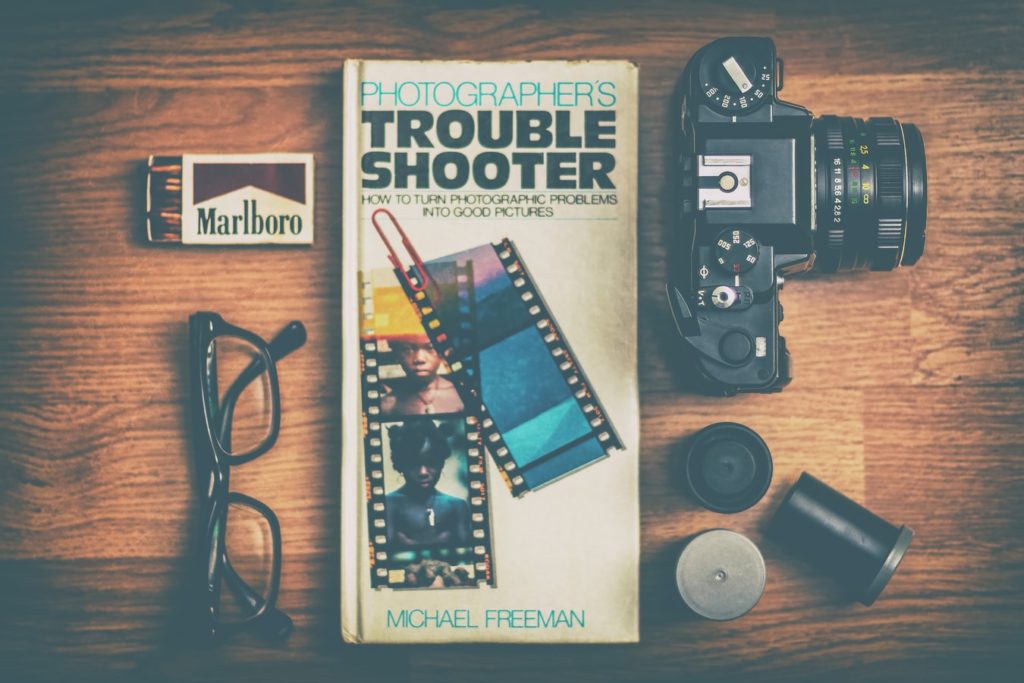Every now and then, we like to find out what people like in the world of photography by looking at what they are actually buying. This is often as simple as going over to the Amazon best seller list. In the world of photography, Scott Kelby is having a very good (and well deserved) run with his books. Here are the others that folks are taking a shine to. What photography book have you purchased lately? Let us know in the comments!

Title: Light It, Shoot It, Retouch It: Learn Step by Step How to Go from Empty Studio to Finished Image
Author: Scott Kelby
Blurb: You see everything from the complete lighting setup (and all the gear used), to the shoot (including all the camera settings and a contact sheet of the progression of the shoot), to the all-important part that most books don’t dare include—the post-processing and retouching in Photoshop. This book also breaks new ground in the visual way it teaches you the lighting setup. There aren’t any sketches or 3D models—you see the lighting layout in a full-page photo, taken from above during the live shoot, so you can see exactly where everything’s positioned (the subject, the photographer, the lighting, the background—you name it—you see it all). Plus, you’ll see side, over-the-shoulder, and more behind-the-scenes views, so you can absolutely nail the lighting every time.
You’ll learn:
- The step-by-step layouts for creating the most-requested and sought-after lighting looks
- How to get more out of one light than you ever thought you could (this is worth it alone!)
- How to control and shape your light without breaking the bank
- The camera settings, gear, and power settings for every shot
- The retouching techniques the pros really use to make their subjects look their very best
- How to retouch hair, eyes, lips, skin, and lots of other little retouching tricks that make a really big difference
- How to create high-contrast portrait effects without buying expensive plug-ins
- A host of insider tricks, invaluable shortcuts, and kick-butt special effects to give you a real advantage over the competition
Title: Photoshop Compositing Secrets: Unlocking the Key to Perfect Selections and Amazing Photoshop Effects for Totally Realistic Composites
Author: Matt Kloskowski
Blurb: In Photoshop Compositing Secrets, Matt Kloskowski takes you through the entire process behind creating convincing, well-executed, and captivating composites. You’ll see how to create images that run the gamut from real-world portraits for corporate, graduation, or group photos to sports portraits, templates, and collages, and even the surreal, dramatic composites that clients clamour for.
You’ll learn:
- One of the most important secrets to compositing: how to master selections in Photoshop (yes, even wispy hair),
- What background color, and camera and lighting setups work best for compositing,
- How to move a subject from one background to another, and the Photoshop lighting and shadowing techniques to make it look real,
- And all the Photoshop tips, tricks, and special effects you need to pull off a convincing, professional composite.
Title: The Art of Photography: An Approach to Personal Expression
Author: Bruce Barnbaum
Blurb: This is an updated and newly revised edition of the classic book The Art of Photography (originally published in 1994), which has often been described as the most readable, understandable, and complete textbook on photography. With well over 100 beautiful photographic illustrations in both black-and-white and color, as well as numerous charts, graphs, and tables, this book presents the world of photography to beginner, intermediate, and advanced photographers seeking to make a personal statement through the medium of photography. Without talking down to anyone, or talking over anyone’s head, Barnbaum presents “how to” techniques for both traditional and digital approaches. Yet he goes well beyond the technical, as he delves deeply into the philosophical, expressive, and creative aspects of photography so often avoided in other books.
Title: Understanding Flash Photography: How to Shoot Great Photographs Using Electronic Flash
Author: Bryan Peterson
Blurb: This guide to on- and off-camera flash picks up where Understanding Exposure leaves off, helping free photographers from the limitations of “auto” to get the images they want when natural light isn’t enough. For the many amateur photographers afraid to venture past natural lighting, here is the book that will finally help them explore the exciting possibilities of artificial light. In his trademark easy-to-understand style, Bryan Peterson explains not only how flash works, but how to go beyond “TTL” automatic flash exposure to master manual flash, allowing readers to control the quality, shape and direction of light for a perfect exposure, every time.
Title: Improve Your Photography: How Budding Photographers Can Get Pro Results [Kindle Edition]
Author: Jim Harmer
Blurb: The book is packed full of quick and easy tips to encourage budding photographers to improve while learning concepts and technical information on photography. Jim explains this book this way, “This is what every photographer needs to know to take clean and stunning photos. If I would have had this book when I started, I would have been two years ahead of everyone else in just 60 pages.”
The book covers topics such as tips for taking better portraits of people, instruction on choosing lenses, tips for landscape and sunset photography, and HDR.
Unlike most photography books that confuse beginning and intermediate photographers with difficult concepts and too much technical data, this book is designed specifically to teach photographers who are just learning how shutter speed, aperture, and ISO work together.
Title: The Photographer’s Eye: Composition and Design for Better Digital Photos
Author: Michael Freeman
Blurb: Design is the single most important factor in creating a successful photograph. The ability to see the potential for a strong picture and then organize the graphic elements into an effective, compelling composition has always been one of the key skills in making photographs.
Digital photography has brought a new, exciting aspect to design – first because the instant feedback from a digital camera allows immediate appraisal and improvement; and second because image-editing tools make it possible to alter and enhance the design after the shutter has been pressed. This has had a profound effect on the way digital photographers take pictures.
Title: Understanding Exposure, 3rd Edition: How to Shoot Great Photographs with Any Camera
Author: Bryan Peterson
Blurb: In his trademark easy-to-understand style, author Bryan Peterson explains the relationship between aperture and shutter speed, including how to achieve successful exposures in seemingly difficult situations. You’ll learn:
- Which aperture gives you the greatest contrast and sharpness, and when to use it
- Which apertures guarantee the background remains an out-of-focus tone
- Which one aperture—when combined with the right lens—creates an area of sharpness from three feet to infinity
- How to creatively use shutter speed to either freeze an action or imply motion
- Where to take a meter reading when shooting a sunset, snow, or a city at dusk
With new information on white balance, flash, HDR, and more, this updated classic will inspire you to stop guessing and take control of your settings for better photos anytime, anywhere, and with any camera.







2 Comments
Great collection of books, I am sure to check these out.
These are all “how to” books which have their place. Why not have a list of books that we should look at for inspiration or this is how a great photograph looks and why